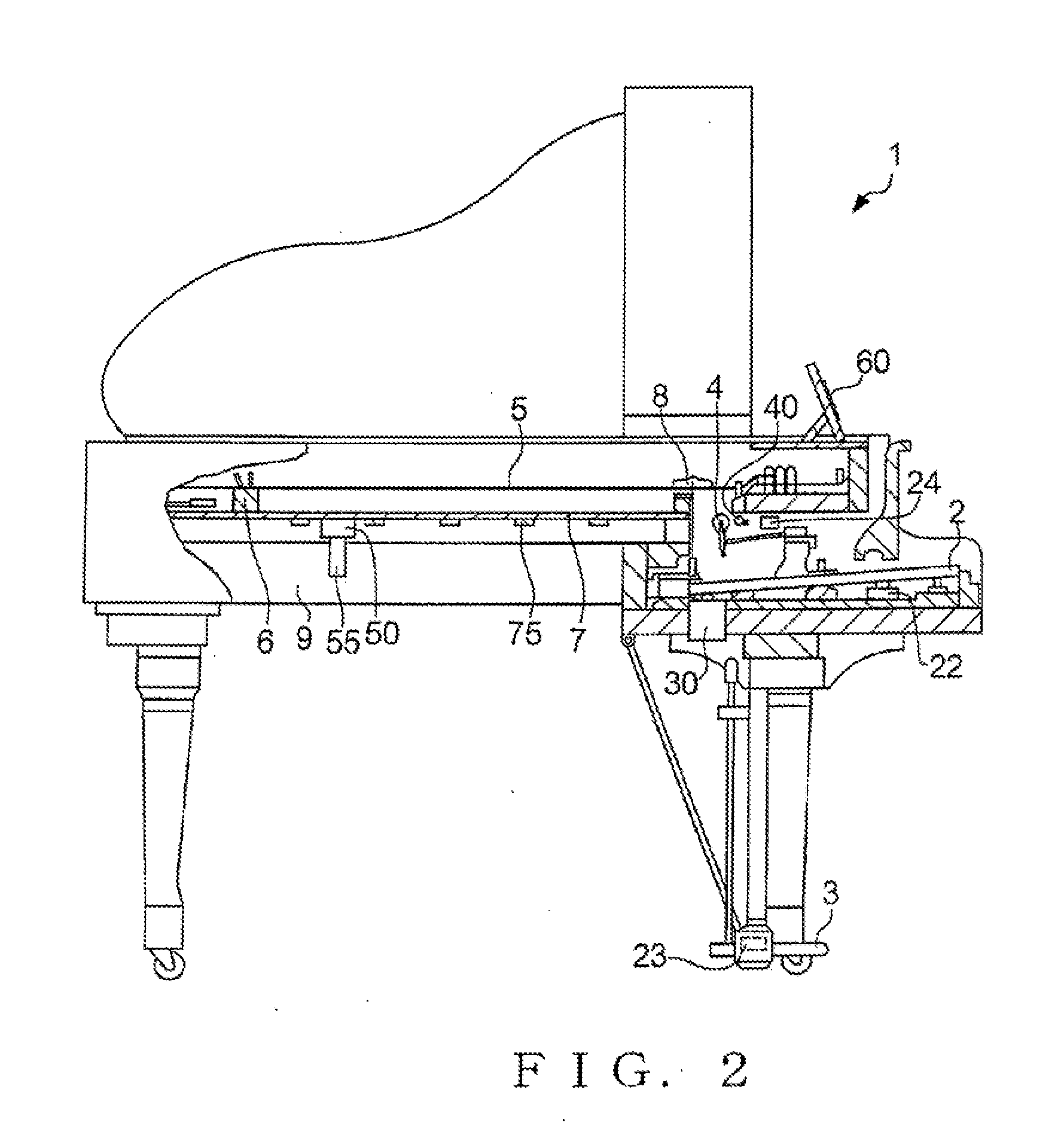Acoustic effect impartment apparatus, and piano
a technology of acoustic effect and imparting apparatus, which is applied in the field of acoustic effect imparting apparatus and piano, can solve the problems of only achieving poor control performance or controllability, and unintended sound generation sta
- Summary
- Abstract
- Description
- Claims
- Application Information
AI Technical Summary
Benefits of technology
Problems solved by technology
Method used
Image
Examples
Embodiment Construction
Overall Construction
[0033]FIG. 1 is a perspective view showing an outer appearance of a grand piano 1 employing a preferred embodiment of an acoustic effect impartment apparatus of the present invention. The grand piano 1 includes a keyboard provided on a front side (i.e., a side closer to a human player or user playing the piano 1) of the piano 1 and having a plurality of keys 2 operable by the human player or user for a music performance, and pedals 3. The grand piano 1 also includes a tone generator device 10 having an operation panel 13 on its front surface portion, and a touch panel 60 provided on a portion of a music stand. User's instructions can be input to the tone generator device 10 by the user operating the operation panel 13 and touch panel 60.
[0034]The grand piano 1 is capable of generating a sound in any one of a plurality of sound generation modes that corresponds to a user's instruction. As in the conventionally-known grand pianos, the plurality of sound generation ...
PUM
 Login to View More
Login to View More Abstract
Description
Claims
Application Information
 Login to View More
Login to View More - R&D
- Intellectual Property
- Life Sciences
- Materials
- Tech Scout
- Unparalleled Data Quality
- Higher Quality Content
- 60% Fewer Hallucinations
Browse by: Latest US Patents, China's latest patents, Technical Efficacy Thesaurus, Application Domain, Technology Topic, Popular Technical Reports.
© 2025 PatSnap. All rights reserved.Legal|Privacy policy|Modern Slavery Act Transparency Statement|Sitemap|About US| Contact US: help@patsnap.com



